
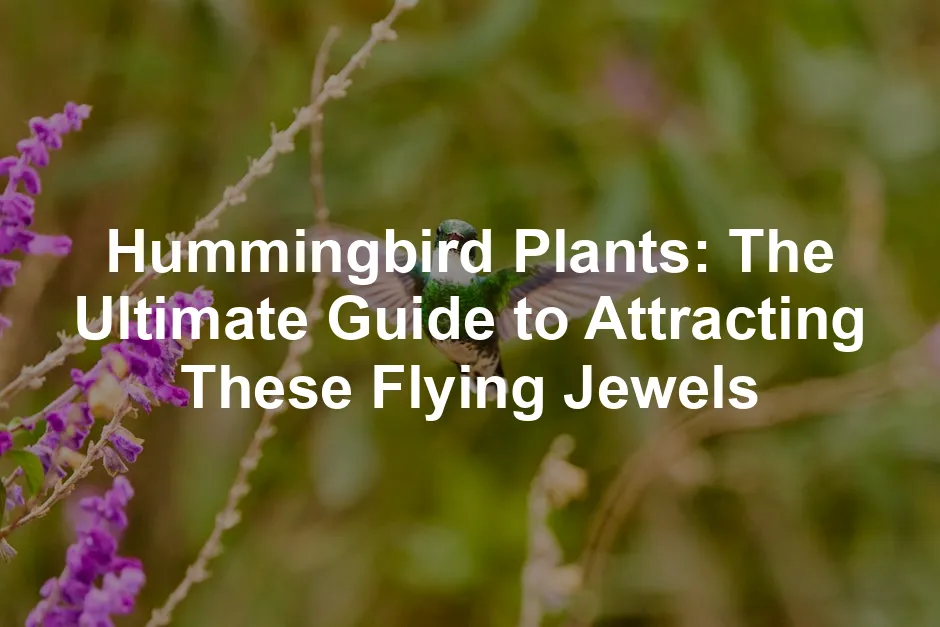
Hummingbird Plants: The Ultimate Guide to Attracting These Flying Jewels
Introduction
Hummingbirds play a vital role in our ecosystem. They help pollinate plants, ensuring flowers bloom and produce seeds. Having these enchanting birds in your garden brings beauty and benefits. This article will guide you through the best plants to attract hummingbirds. You’ll also find tips to create a welcoming space for them.
Summary and Overview
Hummingbird plants are special flowers that draw these fascinating birds. They often prefer brightly colored, tubular blooms, which are rich in nectar. Flowers in shades of red, orange, and pink are particularly appealing.
Many types of plants attract hummingbirds, including annuals, perennials, and biennials. Perennials like bee balm and columbines provide long-lasting blooms. Annuals such as petunias and cleomes offer vibrant colors throughout the season. Biennials like foxgloves also contribute to a hummingbird-friendly garden.
Creating a suitable habitat is essential. A mix of flowers, proper spacing, and shelter can help attract these tiny aviators. By fostering a hummingbird-friendly environment, you support not only their presence but also a thriving ecosystem.

If you’re looking to entice these feathered friends even more, consider adding a Hummingbird Feeder to your garden. These feeders provide a reliable source of nectar, ensuring that hummingbirds keep returning to your yard for a quick snack, and who wouldn’t want that kind of winged magic brightening their garden?
Understanding Hummingbirds
Characteristics of Hummingbirds
Hummingbirds are remarkable little creatures. They typically measure between 3 to 5 inches long, with vibrant plumage that dazzles the eye. Their exceptional color vision allows them to see a spectrum beyond human capabilities, making brightly colored flowers particularly enticing.
These birds have an incredibly high metabolic rate, requiring them to consume twice their body weight in nectar daily. They feed by extending their long, specialized bills into tubular flowers. Their unique anatomy enables them to hover in place while sipping nectar, thanks to their rapid wing beats—some reaching 80 beats per second!
Hummingbirds primarily feed on the nectar of flowers, but they also consume insects for protein. This diverse diet supports their high energy needs. Observing hummingbirds in their natural habitats can be a delightful experience. Grab your binoculars and witness their extraordinary feeding behavior up close!
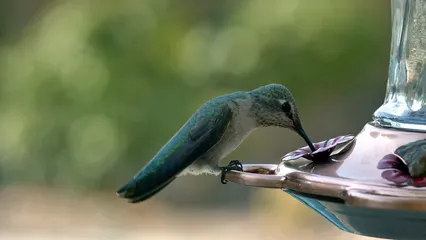
Best Plants for Attracting Hummingbirds
Top Perennials
When it comes to attracting hummingbirds, certain perennials are standouts. Bee balm, with its vibrant red and pink blooms, offers a sweet nectar source. Columbines, available in various colors, have a unique shape that hummingbirds adore.
Daylilies are another favorite due to their abundant blooms and easy care. Lupines, with their tall spikes of color, provide both beauty and nourishment. Don’t forget to grab some Daylily Bulbs to get started!
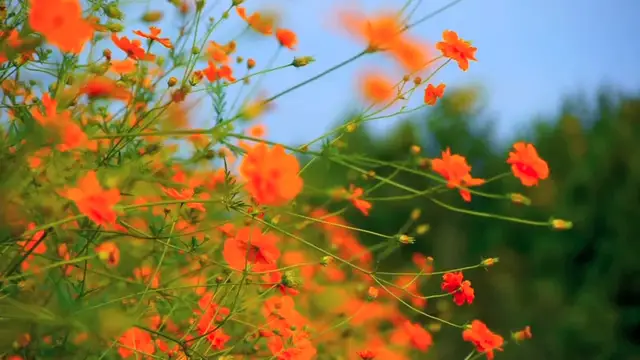
To maximize attraction, plant these flowers in clusters. Ensure they receive plenty of sunlight and well-drained soil. Regular deadheading will encourage more blooms. Incorporating these perennial flowers into your garden creates a stunning landscape while drawing in these enchanting birds. Consider adding a few to your garden and watch the magic unfold!
Biennials and Annuals
Biennial and annual plants can truly enhance your garden’s appeal to hummingbirds. Foxgloves, known for their tall spikes and vibrant colors, can bloom in their second year, providing stunning visuals. Hollyhocks, another biennial option, offer a delightful range of hues and height, creating a charming backdrop.
On the annual side, petunias bring bright colors and abundant blooms throughout the summer. Cleomes, often referred to as spider flowers, add unique shapes and a touch of whimsy. Mixing biennials and annuals ensures continuous color and nectar availability, attracting hummingbirds all season long.
Both types of plants have different growth cycles. Biennials may take longer to establish, but they reward you with lasting beauty. Annuals, however, thrive quickly and fill in gaps. By blending both, you create a visually striking and hummingbird-friendly habitat, ensuring the birds have ample nectar sources and shelter year-round.
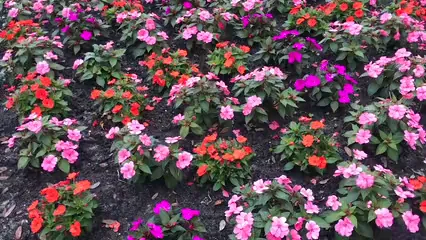
Color Preferences and Flower Shapes
Color and shape play essential roles in attracting hummingbirds. These birds are particularly drawn to vibrant red and orange flowers. Their color vision is exceptional, allowing them to spot these hues from a distance. Research shows that hummingbirds favor flowers with tubular shapes, which make it easier for them to access nectar.
Experts suggest that tubular flowers maximize nectar availability, making them irresistible to these tiny aviators. Flowers like trumpet vines and salvia showcase this shape, providing both beauty and sustenance. Color psychology indicates that bright hues stimulate hummingbirds’ attraction, guiding them to food sources.
Creating a garden with an array of colorful, tubular flowers not only supports hummingbirds but also adds visual interest. Planting these varieties encourages frequent visits, enhancing both your garden’s charm and the joy of observing these stunning creatures up close.
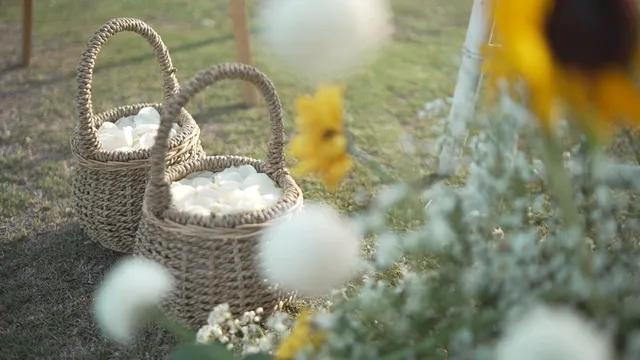
Creating a Hummingbird-Friendly Garden
Garden Design Tips
Designing a garden that attracts hummingbirds is all about creating the right environment. Start by grouping plants in clusters to make it easier for birds to find food. Aim for a mix of heights—tall plants like trumpet vines can provide cover while shorter flowers add color.
Consider a tiered planting approach. This layout not only enhances visual interest but also allows hummingbirds to navigate easily. Spacing is crucial; plants should be close enough for the birds to hop between but far enough to allow them to hover.
For example, combine bee balm and salvias at the back with shorter annuals like petunias in front. This arrangement creates a stunning display and attracts attention. Including a few shaded areas with small trees or shrubs can provide shelter, making your garden more inviting. Check out garden design diagrams online for visual inspiration.
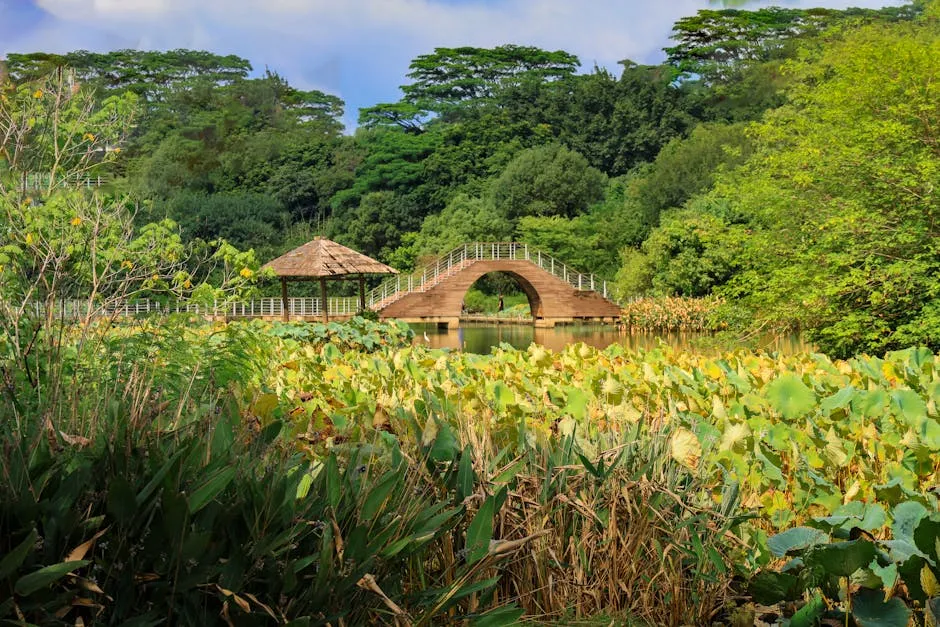
Don’t forget to incorporate a birdbath in your design! A shallow basin filled with clean water provides hydration and a refreshing splash for your hummingbird guests, ensuring they feel right at home.
Water Sources and Feeding Stations
Providing water is essential for your hummingbird garden. Hummingbirds need hydration, especially during hot days. You can create a simple water source by adding a shallow birdbath. A gentle spray from a garden nozzle can also mimic a natural water source that they enjoy.
Feeding stations are equally important. Invest in quality hummingbird feeders that are easy to clean. A mixture of one part sugar to four parts water works best as nectar. Avoid using red dye; it can be harmful to birds. Clean feeders every few days to prevent mold growth.
Statistics show that a well-maintained feeder can attract numerous hummingbirds throughout the season. Placing feeders near flowering plants can enhance their visibility. With the right setup, your garden can become a bustling hub for these delightful birds.
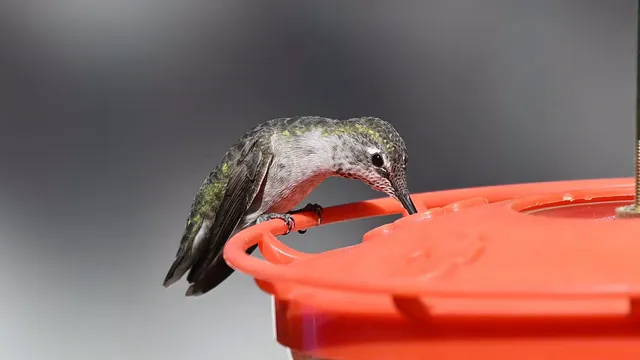
Maintaining Your Hummingbird Garden
Seasonal Care
Caring for your hummingbird plants throughout the seasons is essential. In early spring, start by pruning dead or damaged branches. This helps promote new growth and vibrant blooms. Fertilize your plants with a balanced, organic fertilizer to give them a nutrient boost. Aim to do this monthly until mid-summer.
As summer ends, prepare your plants for winter. Cut back perennials after the first frost to prevent diseases. Consider mulching around the base of plants to insulate roots during colder months. In late winter, check your garden for any remaining debris. This will encourage healthy spring growth and attract hummingbirds as they return.
By keeping a seasonal care routine, your plants will flourish. This ensures they remain a reliable food source for hummingbirds year after year.
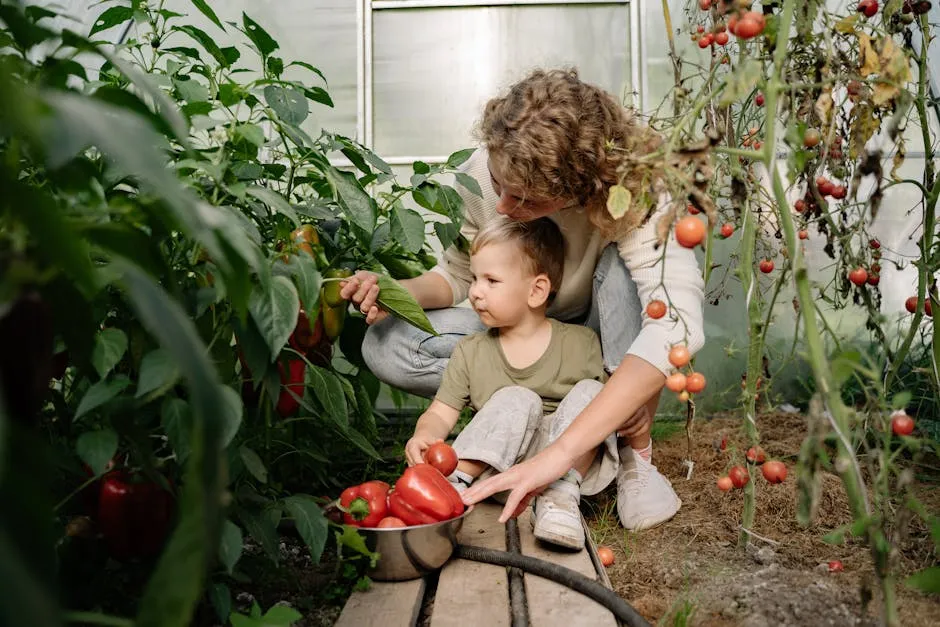
Common Pests and Problems
Hummingbird plants can attract pests that threaten their health. Common culprits include aphids, spider mites, and whiteflies. These pests can sap plant vitality, leading to reduced blooms. In fact, infestations can cut plant health by as much as 50%.
For organic pest management, start with neem oil. It effectively deters pests without harming hummingbirds. In addition, introduce beneficial insects like ladybugs, which feast on aphids. Regularly inspect your plants for early signs of trouble.
Maintaining healthy soil through composting can also strengthen your plants. Healthy plants are more resilient against pests. By being proactive, you can enjoy a thriving hummingbird garden free of harmful chemicals.
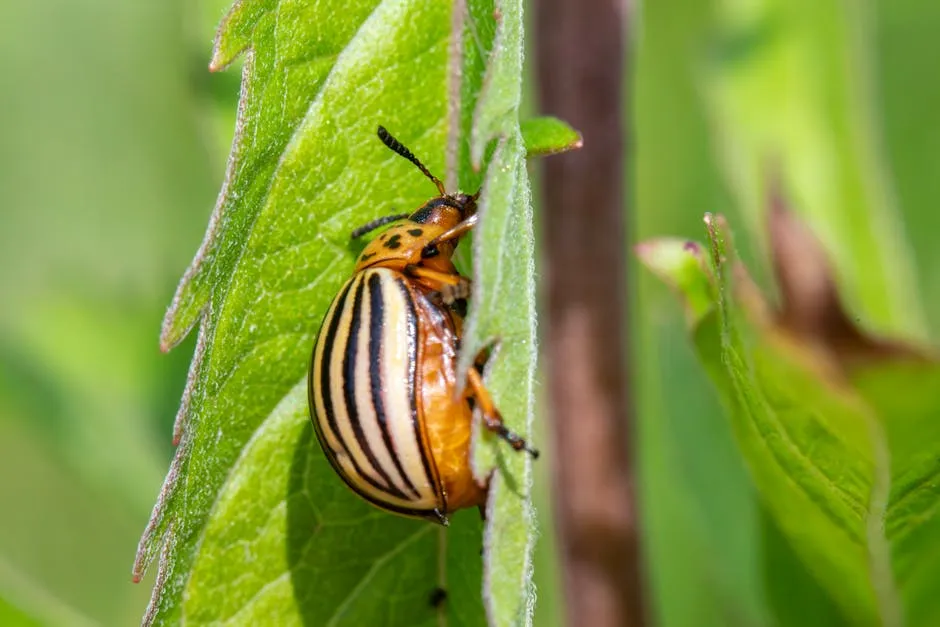
Fun Facts About Hummingbirds
Hummingbirds are truly remarkable creatures! Did you know they can fly backward? This unique ability makes them stand out among birds. They also have a rapid heartbeat, beating up to 1,200 times per minute when hovering.
During migration, some species travel over 3,000 miles! They navigate using the sun and landmarks, showcasing their impressive memory. Hummingbirds consume nectar at an astonishing rate—visiting over a thousand flowers daily. This constant feeding is crucial for their high-energy lifestyle.
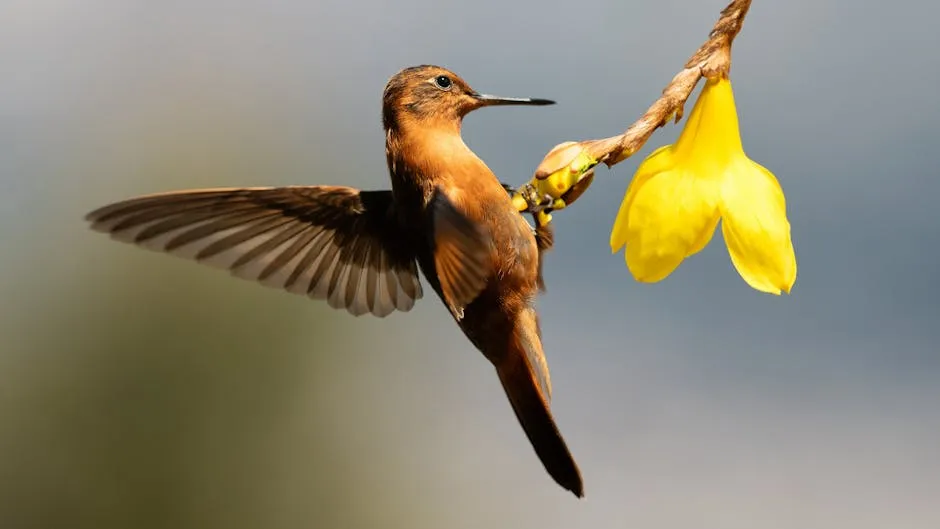
One fascinating fact is their tongue. It’s uniquely split and can extend to gather nectar efficiently. Watching these tiny aviators in action is a joy. Consider setting up a feeder to attract them and enjoy their delightful antics!
Conclusion
In summary, creating a hummingbird-friendly garden involves choosing the right plants and maintaining their health. Seasonal care practices ensure your garden thrives and attracts these beautiful birds. Remember, a suitable environment includes food, water, and shelter.
Start your journey today! Plant vibrant flowers and provide feeders to welcome hummingbirds into your space. Don’t forget to check out a gardening book for tips on how to keep your garden flourishing!
To ensure your plants thrive and remain pest-free, learn about common pests in Japanese friendship gardens and how to control them.
Please let us know what you think about our content by leaving a comment down below!
Thank you for reading till here 🙂
For those looking to keep their gardens organized, consider a set of plant labels to track your garden’s progress and keep everything sorted!
And for those who want to go the extra mile, a portable greenhouse can create a perfect environment for your plants, giving them the TLC they deserve!
Lastly, if you’re keen on ensuring your water sources are consistent, a rain gauge is a fantastic addition for monitoring rainfall and ensuring your garden gets the right amount of water.
All images from Pexels



